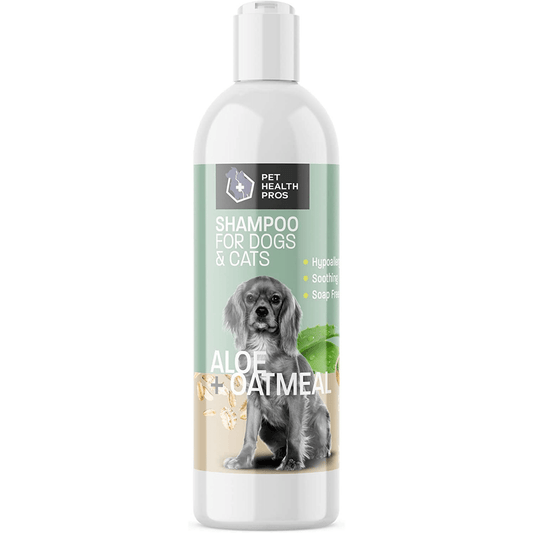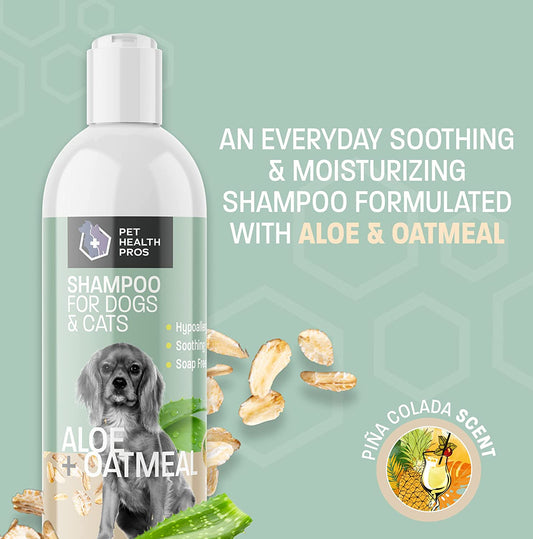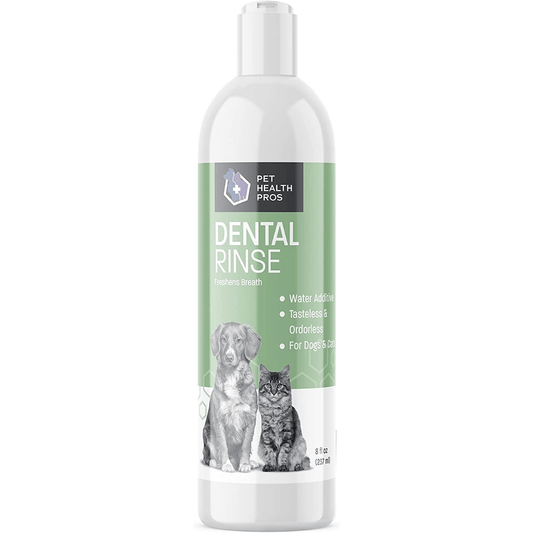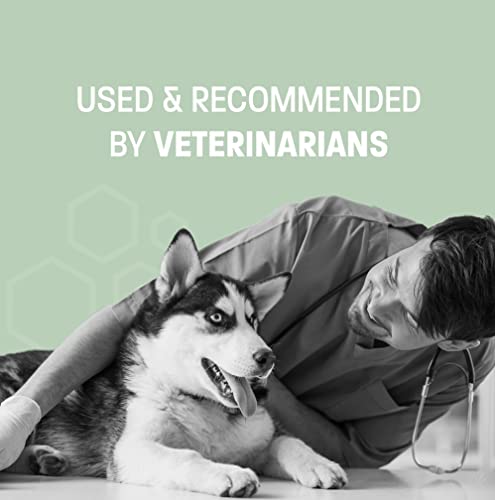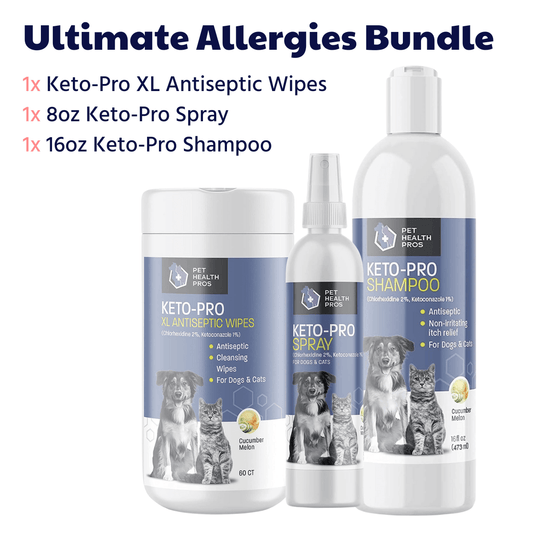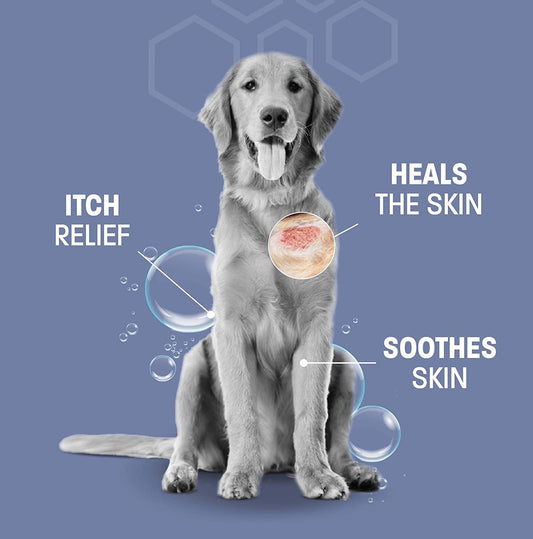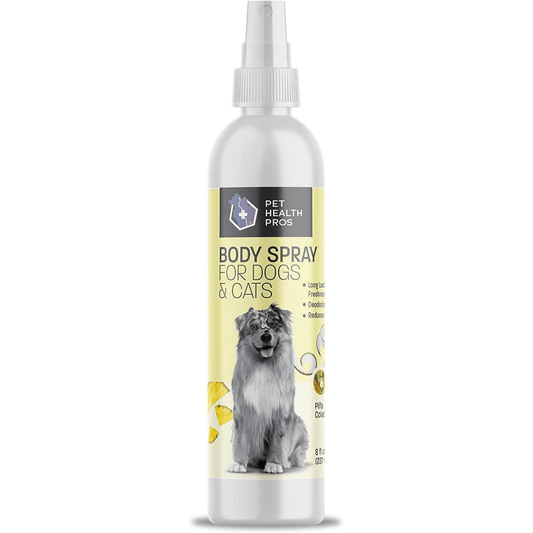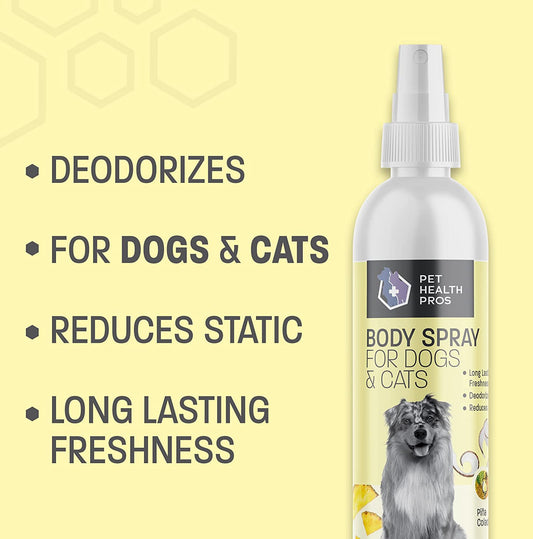Welcome to 'Put a Stop to Gnawing: Top Dog Chewing Repellents Reviewed,' your comprehensive guide to understanding and addressing your canine companion's chewing habits. Brought to you by Pet Health Pros, a U.S.-based company with over fifty years of expertise in Veterinary Medicine and Animal Health Management, we're committed to providing superior, affordable pet health supplies crafted in collaboration with veterinarians using locally sourced, top-grade ingredients. Our mission is to enhance the lives of pets and reassure their owners through expertly crafted solutions that cater to the evolving needs of pets and their owners. Dive into our article to discover the best ways to curb unwanted chewing behavior while ensuring your pet's safety and happiness.
Key Takeaways
- Understanding your dog's chewing behavior is crucial for selecting the appropriate repellent, whether it's due to psychological reasons, stress, or age-related factors.
- Choosing the right repellent involves considering non-toxic ingredients, the type of repellent (sprays, mats, etc.), and ensuring it aligns with your dog's safety and health.
- Effective application of chewing repellents requires best practices for use, combining repellents with training, and knowing how to troubleshoot common issues that may arise.
- Pet Health Pros offers veterinarian-recommended solutions that are customer favorites, ensuring quality and safety with a 100% satisfaction guarantee for a chew-free environment.
- Beyond repellents, fostering a chew-free environment includes providing interactive toys, creating a pet-friendly home, and ensuring regular exercise and a proper diet for your dog.
Understanding Your Dog's Chewing Behavior
The Psychology Behind Chewing
Understanding why dogs chew is crucial in addressing the behavior effectively. Chewing is a natural and necessary activity for dogs. It helps them keep their teeth clean and jaws strong, and it can also be a way for them to explore their environment. Puppies, in particular, chew during teething to relieve pain and discomfort. For adult dogs, chewing can be a form of stress relief or a response to boredom.
Certain factors can influence a dog's desire to chew, including genetics, breed predisposition, and individual personality. It's important to recognize that while some chewing is normal, excessive or destructive chewing can be a sign of underlying issues. Behavioral enrichment and proper training can help mitigate unwanted chewing behaviors.
- Identify the cause of chewing: boredom, anxiety, teething, etc.
- Provide appropriate chew toys and alternatives.
- Reinforce positive behavior with rewards when your dog chews on appropriate items.
Consistent training and providing the right chew toys are key to managing your dog's chewing behavior effectively.
Identifying Stress-Related Chewing
Dogs, much like humans, can exhibit stress in various ways, and one common outlet is through chewing. Identifying stress-related chewing is crucial in addressing the root cause of the behavior rather than merely treating the symptom. Stress-related chewing can be triggered by factors such as separation anxiety, changes in the environment, or lack of mental stimulation.
Separation anxiety is a prevalent cause of stress in dogs, leading them to chew on household items as a coping mechanism. To determine if your dog's chewing is stress-related, observe their behavior in different situations. For example, do they chew more when left alone or during thunderstorms? Recognizing these patterns is the first step towards finding an effective solution.
- Signs of stress-related chewing include:
- Destruction of personal items or furniture
- Increased chewing when the dog is alone
- Chewing in response to loud noises or unfamiliar guests
It's essential to approach stress-related chewing with empathy, understanding that your dog is not acting out of spite but rather trying to alleviate their discomfort.
By addressing the underlying stressors and providing appropriate outlets for your dog's energy, you can help minimize destructive chewing behavior.
Age-Related Chewing Patterns
As dogs age, their chewing behavior often reflects their changing needs and health. Puppies, for instance, chew as a way to explore their environment and to relieve the discomfort of teething. Older dogs might chew less frequently, but when they do, it can be due to dental issues or as a comforting behavior to cope with age-related anxiety.
Chewing patterns can also indicate cognitive changes in senior dogs. It's crucial to monitor these habits and provide appropriate chew toys that cater to their age and dental health. Here's a simple guide to help you understand the age-related chewing stages:
- Puppies (0-6 months): Teething, exploration, learning bite inhibition
- Juveniles (6-12 months): Continued teething, establishing chewing habits
- Adults (1-7 years): Maintenance of chewing behavior, potential stress-related chewing
- Seniors (7+ years): Decreased chewing, potential cognitive-related changes
When addressing age-related chewing, always consider the individual needs of your dog and consult with a veterinarian for tailored advice. Remember, a guide to prevent dog chewing includes using no chew spray, providing chew toys, positive reinforcement, and addressing underlying causes. Seek professional help if needed for lasting results.
Choosing the Right Repellent for Your Dog
Ingredients Matter: What to Look For
When selecting a chewing repellent for your dog, the ingredients list is a crucial factor to consider. Look for products with natural, non-toxic components that are safe for your pet. Some repellents use bittering agents like denatonium benzoate, which is considered one of the most bitter substances and is effective in deterring dogs from chewing. However, it's essential to ensure that the concentration is appropriate for pets.
Avoid repellents containing alcohol, xylitol, or any other substances that could be harmful if ingested. Instead, opt for repellents with ingredients that are not only safe but also beneficial for your dog's health. For example, some products might include soothing agents that can help reduce stress-related chewing.
Remember, the goal is to discourage unwanted chewing without compromising your dog's health or comfort.
Here's a quick list of ingredients to consider in a dog chewing repellent:
- Bitter agents (e.g., denatonium benzoate)
- Soothing elements (e.g., aloe vera)
- Natural deterrents (e.g., lemon or citrus extracts)
- Spices with deterrent properties (e.g., cayenne pepper)
While commercial products are formulated for safety and efficacy, some pet owners opt for home remedies as a more natural approach. Ingredients like lemon solution, citrus solutions, and even hot spices can be used to create homemade deterrent sprays. However, it's important to research and test these remedies carefully to ensure they are safe and effective for your pet.
Types of Repellents: Sprays, Deterrent Mats, and More
When selecting a chewing repellent for your dog, it's important to understand the variety of options available. Sprays are a popular choice, as they can be applied directly to the objects you want to protect. These typically contain bittering agents that discourage dogs from chewing. Deterrent mats, on the other hand, are physical barriers that provide an unpleasant texture to deter chewing.
Other repellents include gels, creams, and even ultrasonic devices. Each type has its own method of application and effectiveness, which can vary depending on the dog's size, breed, and chewing habits. It's crucial to choose a repellent that is safe for your pet and the environment.
- Sprays: Apply directly to objects
- Deterrent Mats: Place on or near items
- Gels: Spread on surfaces
- Creams: Rub onto items
- Ultrasonic Devices: Emit deterring sounds
Safety should always be the top priority when choosing a repellent. Opt for products that are non-toxic and specifically designed for pets to ensure that your furry friend remains unharmed while learning to curb their chewing behavior.
Safety First: Selecting Non-Toxic Options
When it comes to deterring your furry friend from unwanted chewing, safety should be at the forefront of your decision-making process. Choosing a non-toxic repellent is crucial to ensure the well-being of your pet. Many commercial repellents contain harsh chemicals that can be harmful if ingested. Instead, look for products that use natural ingredients, which are less likely to cause adverse reactions.
It's essential to read labels carefully and understand the components of a chewing repellent before applying it to your belongings or your dog's environment.
Here are some key points to consider when selecting a safe chewing repellent:
- The product should be free from harmful chemicals such as ammonia or alcohol.
- Opt for repellents with a bitter taste, as these are often made with safer ingredients.
- Verify that the product is labeled as safe for use around pets and children.
- Consult with your veterinarian if you're unsure about the safety of a product.
By prioritizing non-toxic options, you not only protect your belongings but also promote healthier chewing habits for your dog.
Effective Application of Chewing Repellents
Best Practices for Repellent Use
When applying chewing repellents, it's crucial to choose a product that aligns with the surfaces you're treating and the safety of your pet. For instance, a chew spray should be selected based on the surface, ingredients, and strength to ensure it's effective without causing harm. A success story often highlights the importance of this tailored approach.
- Read the label carefully and follow the manufacturer's instructions.
- Test the repellent on a small area first to check for any adverse reactions.
- Apply the repellent consistently to all areas where chewing is unwanted.
- Reapply as necessary, especially after cleaning the treated surfaces.
Consistency is key in reinforcing the no-chew zones for your dog. Regular application coupled with positive reinforcement can significantly reduce unwanted chewing behavior.
Remember, repellents are an aid, not a cure. They work best when used in conjunction with training techniques that address the underlying reasons for your dog's chewing.
Training Your Dog Alongside Repellent Use
Integrating repellents into your dog's training routine can be highly effective in curbing unwanted chewing behavior. Consistency is key when using repellents; apply them regularly to maintain their deterrent effect. However, it's crucial to pair repellent use with positive reinforcement techniques.
Positive reinforcement involves rewarding your dog for good behavior, such as chewing on appropriate items, with treats, praise, or playtime. This encourages your dog to repeat these desirable actions. Here's a simple guide to combining repellents with training:
- Identify the objects your dog is prone to chew and apply repellent.
- Provide your dog with suitable chew toys and reward them for using these instead.
- If your dog attempts to chew on repellent-treated items, redirect their attention to the appropriate toys.
- Praise and reward your dog immediately after they choose the correct item to chew.
Remember, training takes time and patience. Do not expect immediate results, and avoid using repellents as a punishment. They are a tool to help guide your dog towards better habits.
When used correctly, repellents can be a valuable part of a comprehensive training strategy that promotes a happy, healthy, and well-behaved pet.
Troubleshooting Common Issues
When using chewing repellents, pet owners may encounter issues where their dogs continue to gnaw on furniture or other items. It's crucial to understand that repellents are a deterrent, not a cure. Consistency in application and patience are key to success. If a repellent seems ineffective, consider the following steps:
- Reapply the repellent according to the manufacturer's instructions, as the effectiveness can diminish over time.
- Ensure that the repellent covers the entire area of interest; incomplete coverage can lead to inconsistent results.
- Observe your dog's behavior to identify any patterns or triggers that may be causing the chewing.
Remember, the goal is to discourage the habit while promoting positive behaviors. Repellents should be used in conjunction with training methods that encourage your dog to chew on appropriate items.
In some cases, a comparison between no chew sprays and training may reveal that the latter, especially when involving positive reinforcement, is more effective in creating healthier habits. It's important to tailor the approach to your dog's specific needs and to remain flexible in your methods.
Pet Health Pros' Top Repellent Picks
Veterinarian-Recommended Solutions
When it comes to choosing the right chewing repellent for your dog, veterinarian-recommended solutions often lead the pack. Pet Health Pros is a U.S.-based company that has garnered the trust of veterinarians and pet owners alike. Their products are not only backed by over fifty years of combined experience in veterinary medicine but are also crafted in collaboration with veterinarians, ensuring that each solution is both effective and safe for your furry friend.
Ingredients matter, and that's why Pet Health Pros uses only top-grade, locally sourced ingredients in their repellents. Their commitment to quality is evident in their brand promise to enhance the lives of pets with expertly crafted solutions. Below is a list of their top repellent picks that have been highly recommended by veterinarians:
- Grannick's Bitter Apple Dog Deterrent
- Four Paws Healthy Promise Bitter Lime Spray
- Emmy's Best 3X Anti-Chew Bitter Dog Spray
Safety is a paramount concern, and Pet Health Pros ensures that all their products are non-toxic and come with a 100% satisfaction guarantee. This dedication to safety and quality is what makes their repellents a top choice for preventing unwanted chewing behavior.
With a brand voice that is knowledgeable, confident, and empathetic, Pet Health Pros stands out as a leader in the industry. Their customer-centric services and educational content further support pet owners in making informed decisions for the well-being of their pets.
Customer Favorites and Reviews
When it comes to preventing unwanted chewing, pet owners often turn to tried-and-true solutions that have garnered positive feedback from fellow consumers. Customer reviews play a pivotal role in determining the effectiveness and appeal of chewing repellents. One standout category is DIY no-chew spray recipes, which offer natural and cost-effective solutions to deter pets from chewing on items. Using common ingredients like vinegar and citrus, these homemade sprays are safe and effective.
In addition to DIY options, commercially available repellents also receive high marks from customers. Products from Pet Health Pros, for instance, are frequently mentioned for their superior quality and satisfaction guarantee. The brand's commitment to using top-grade ingredients and collaborating with veterinarians resonates with consumers who prioritize the health and safety of their pets.
The right repellent can make all the difference in maintaining a chew-free home and a happy pet. Ensuring the product is non-toxic and suited to your pet's specific needs is crucial.
Here's a quick glance at some of the customer favorites:
- DIY Citrus-Vinegar Spray
- Pet Health Pros No-Chew Bitter Spray
- Commercial Deterrent Mats
- Natural Chew Toys as Preventative Alternatives
These products not only prevent destructive behavior but also contribute to a pet-friendly environment that encourages positive play and interaction.
Our Commitment to Quality and Safety
At Pet Health Pros, we understand that the safety and well-being of your furry companions are paramount. Our products are crafted in collaboration with veterinarians and are made with locally sourced, top-grade ingredients, ensuring that every repellent we recommend not only deters unwanted chewing but does so without compromising your pet's health.
We stand behind our brand assurance, offering a 100% satisfaction guarantee to reflect our dedication to quality and the trust you place in us.
Our commitment extends beyond the products themselves. We strive for consistent improvement of our services, catering to the evolving needs of pets and their owners. Here's a snapshot of our brand ethos:
- Trustworthy and expert solutions
- Caring and innovative approach
- Community-focused engagement
With over fifty years of combined experience in Veterinary Medicine and Animal Health Management, our foundation is deeply rooted in expertise and a genuine love for animals. Our tagline, "Healthier Pets, Happier Lives," encapsulates our mission to enhance the lives of pets and provide peace of mind to their owners.
Beyond Repellents: Fostering a Chew-Free Environment
Interactive Toys and Alternatives to Chewing
While repellents can be an effective short-term solution to discourage unwanted chewing, providing engaging alternatives can address the root of the behavior. Interactive toys are designed to stimulate your dog's mind and reduce the likelihood of boredom-related chewing. These toys often require your dog to solve puzzles to receive treats, keeping them occupied and mentally challenged.
Interactive toys come in various forms, from treat-dispensing puzzles to tug-of-war ropes. Here's a list of popular types:
- Puzzle toys that release treats
- Durable chew toys designed for long-lasting play
- Tug toys that provide interactive playtime with owners
- Fetch toys that encourage active play
It's essential to match the toy to your dog's size, chewing style, and interest to ensure safety and engagement.
Remember, the goal is to redirect your dog's chewing behavior towards appropriate items. By incorporating these toys into your dog's routine, you can foster a chew-free environment while enhancing their overall well-being.
Creating a Pet-Friendly Home
Creating a pet-friendly home is about more than just minimizing chewing; it's about fostering an environment where your dog can thrive without resorting to destructive behaviors. Designate specific areas for your dog to play and rest, ensuring they are comfortable and appealing. Use anti-chew sprays judiciously in areas where chewing is undesirable, but remember that these are just one tool in your arsenal.
To further discourage unwanted chewing, consider the layout and accessibility of your home. Keep personal items and potential chew targets out of reach. Here's a simple checklist to help you create a chew-free zone:
- Secure loose wires and cords
- Store shoes and clothing in closed closets
- Provide plenty of chew toys and bones
- Regularly rotate toys to maintain interest
Remember, a pet-friendly home is a proactive approach to managing your dog's natural chewing instincts. By providing appropriate outlets and securing your belongings, you can reduce the likelihood of destructive chewing.
When selecting products like anti-chew sprays, it's important to consider their ingredients and safety. Brands like Rocco & Roxie, Grannick's, Fooey!, and Pets Are Kids Too offer options that balance effectiveness with non-toxic formulations. However, limitations exist, and these should not be the sole deterrent.
The Role of Regular Exercise and Diet
Regular exercise and a balanced diet are fundamental in curbing unwanted chewing behavior in dogs. Adequate physical activity ensures that dogs expend their energy in a healthy way, reducing the likelihood of them turning to destructive chewing as an outlet. A well-structured exercise regimen should be tailored to the dog's age, breed, and health status.
A nutritious diet also plays a crucial role in a dog's overall well-being. Feeding your dog high-quality food that meets their nutritional needs can prevent boredom and anxiety, which are often triggers for chewing. It's important to avoid overfeeding, which can lead to obesity and exacerbate chewing issues. Instead, opt for interactive feeding toys that stimulate your dog's mind and prolong feeding times.
While no chew sprays and deterrents can be effective, they should be part of a broader strategy that includes regular exercise and proper nutrition. This holistic approach addresses the root causes of chewing and promotes a harmonious living environment for both pets and their owners.
Remember, various alternatives to no chew sprays, such as bitter sprays, chew toys, and positive reinforcement, can help prevent destructive chewing in pets. Consult a vet for tailored advice.
Creating a chew-free environment goes beyond just using repellents. It's about understanding the behavior of your pets and implementing strategies that will prevent them from turning to your precious belongings as chew toys. Our comprehensive guide on our website offers insights and tips on how to achieve this. Don't let chewed-up items be a common sight in your home. Visit our website now to learn more and take the first step towards a chew-free household!
Conclusion
In conclusion, finding the right chewing repellent for your dog can be a significant step towards ensuring the longevity of your household items and the safety of your pet. Throughout this article, we've explored various options, highlighting their effectiveness, ingredients, and ease of use. It's essential to choose a product that aligns with your pet's needs and your own values, such as those offered by Pet Health Pros. With their U.S.-based operations, collaboration with veterinarians, and commitment to quality and customer satisfaction, Pet Health Pros stands out as a reliable choice. Remember, the goal is not just to deter unwanted chewing but to provide a healthier lifestyle for your furry companion. As you make your selection, consider the comprehensive approach of Pet Health Pros, which is not only about deterring unwanted behaviors but also about enhancing the overall well-being of pets, as reflected in their brand promise. Whether you shop through their online store or Amazon storefront, you're backed by their expertise and dedication to 'Healthier Pets, Happier Lives.'
Frequently Asked Questions
What are the main reasons dogs chew on things?
Dogs may chew as a natural instinct, for teething relief, due to boredom, anxiety, or as a response to environmental stressors. It's important to understand the underlying cause to address the behavior effectively.
Are chewing repellents safe for all dogs?
Most repellents are designed to be safe, but it's crucial to select non-toxic options and follow the manufacturer's instructions. Always check with your vet if you're unsure about a specific product's safety for your dog.
How do I apply a chewing repellent properly?
Apply the repellent directly to the objects or areas you want to protect, ensuring even coverage. Avoid applying it to items that your dog is allowed to chew. Reapply as necessary, following the product's guidelines.
Can I use repellents as a sole solution to stop my dog from chewing?
While repellents can deter chewing, they should be used as part of a broader training strategy that includes positive reinforcement and providing appropriate chew toys for your dog.
What should I look for in a dog chewing repellent?
Look for repellents with non-toxic ingredients, vet-recommended formulations, and positive customer reviews. Consider the type of repellent that best suits your situation, whether it's a spray, deterrent mat, or other form.
Are there alternatives to using chemical repellents for chewing?
Yes, alternatives include providing appropriate chew toys, increasing exercise, using deterrent mats or covers for furniture, and engaging in training to redirect the chewing behavior to acceptable objects.


